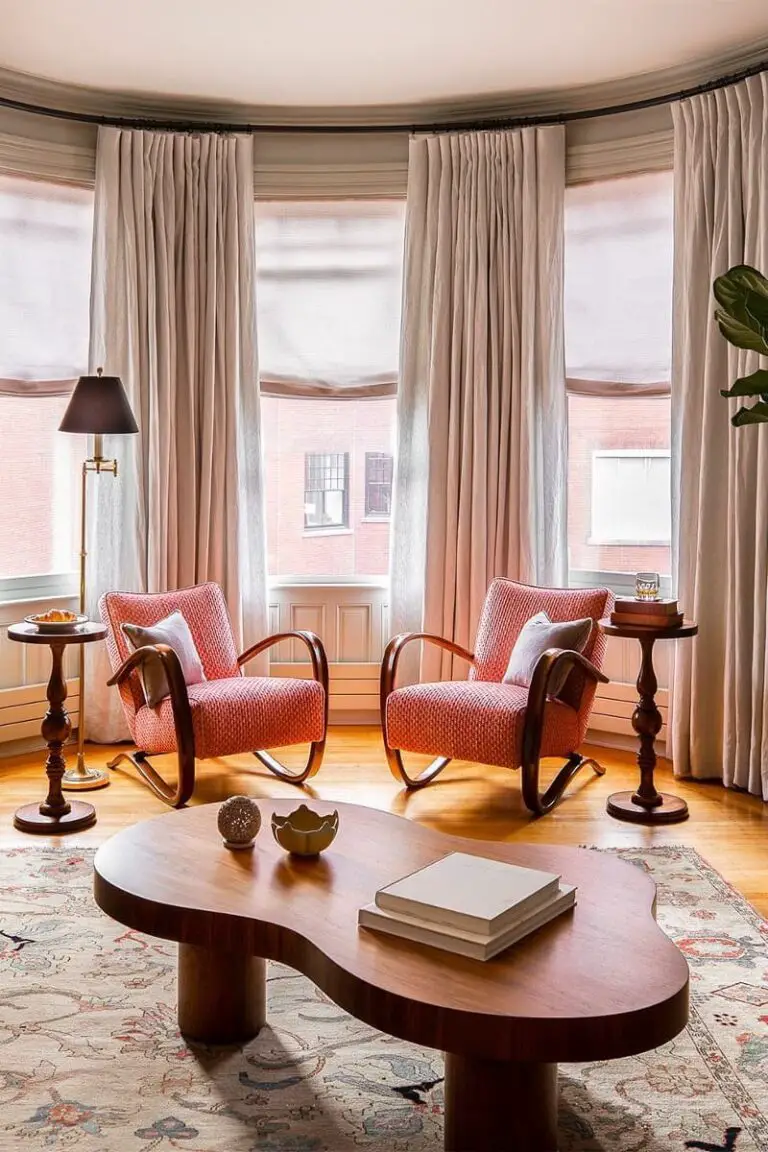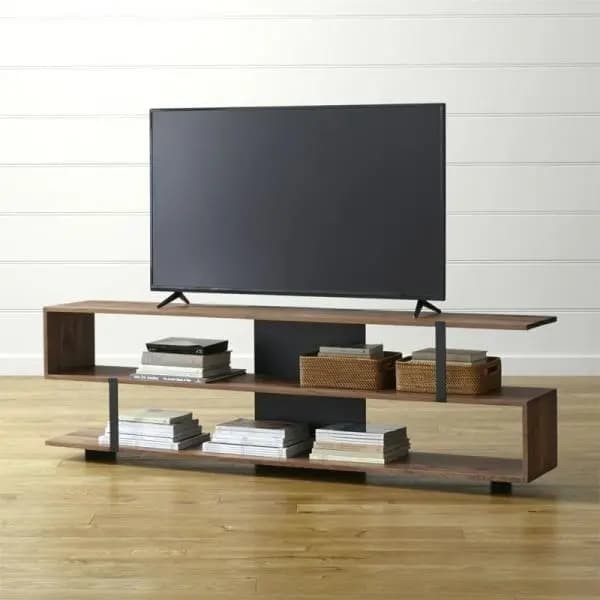What Color Walls Go With Dark Wood Trim? (10 Best Ideas)
When it comes to pairing colors with dark wood trim, there’s no need to worry about making a wrong choice. The key is to find a harmonious combination that creates a visually appealing space. To achieve this, consider the following colors that complement dark wood trim nicely: beige and cream for a warm and inviting atmosphere, blue or gray for a calm and sophisticated ambiance, green or yellow for a natural and uplifting feel, or neutral white for a clean and modern look.
These color combinations can be applied to various rooms in your home, from living spaces to bedrooms, and even kitchens. For instance, pairing beige walls with dark wood trim creates a cozy atmosphere perfect for a family room. On the other hand, combining blue walls with dark wood trim adds a touch of elegance to a bedroom or dining area. The possibilities are endless! When choosing between lighter or darker shades, remember that it’s all about balance and contrast.
If you want to create a bold statement, pair dark wood trim with a light-colored wall. Conversely, if you prefer a more subtle look, choose a darker shade for the walls and trim. Ultimately, the choice is yours.
Best Wall Colors Go With Dark Wood Trim
Beige.
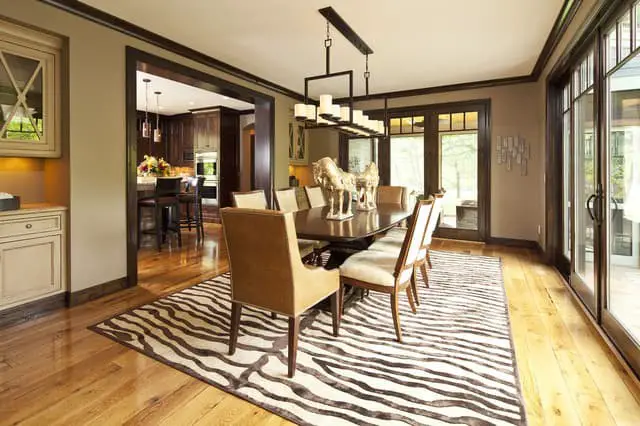
While beige is often perceived as a dull color, it can actually be quite striking when paired with rich, dark wood trim. This combination is versatile enough to work well in any room of the home, from kitchens seeking warmth to living rooms craving coziness. The subtle contrast between the neutral walls and the darker trim creates a visually appealing balance that can elevate the overall aesthetic of the space.
Blue.
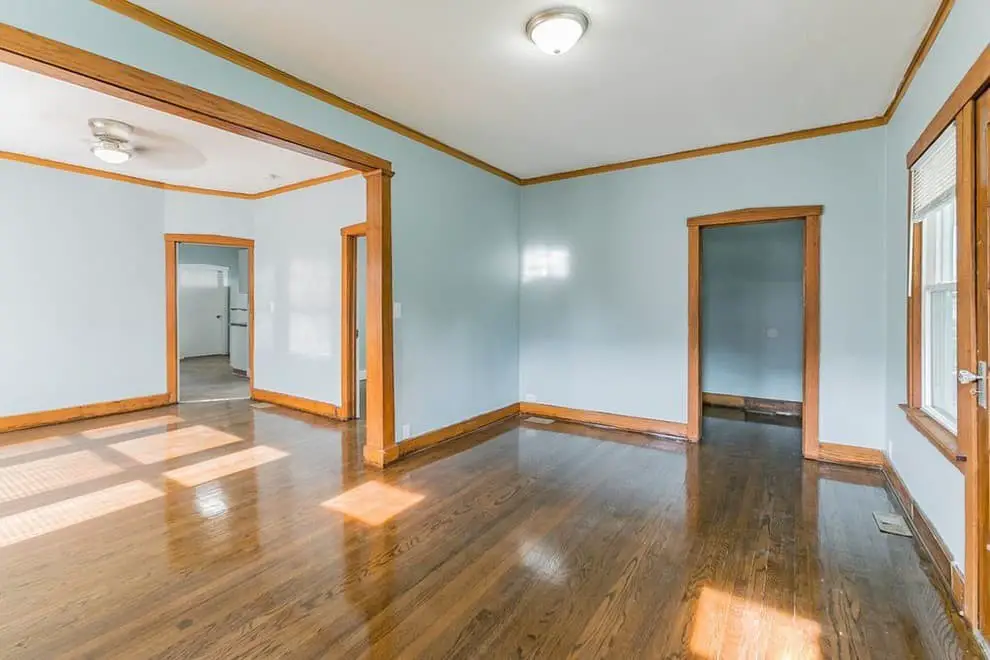
The timeless harmony between blue walls and dark wood trim is undeniable. This classic color combination never fails to impress, and the best part? It’s surprisingly easy to recreate in your own home. By painting your walls a soothing shade of blue and incorporating rich dark wood trim around the edges, you’ll be treated to a visually stunning contrast that will elevate the entire space.
Cream.
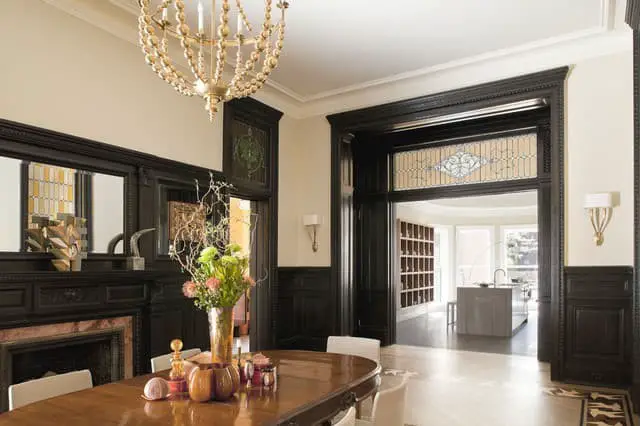
Pairing cream walls with dark wood trim creates a luxurious ambiance that’s perfect for any room in your home. The rich tones of the dark wood complement the soft, creamy hue of the walls beautifully, making the space feel cozy and inviting. This timeless combination is ideal for rooms like the living room or bedroom, where you want to create a sense of relaxation and sophistication.
If you’re unsure about what color to paint your walls, cream is a great choice that pairs well with dark wood trim. So why not give it a try? You can’t go wrong with this classic combination! Plus, its versatility means you can use it in any room, from the bedroom to the dining room, without fear of it looking out of place.
Gray.
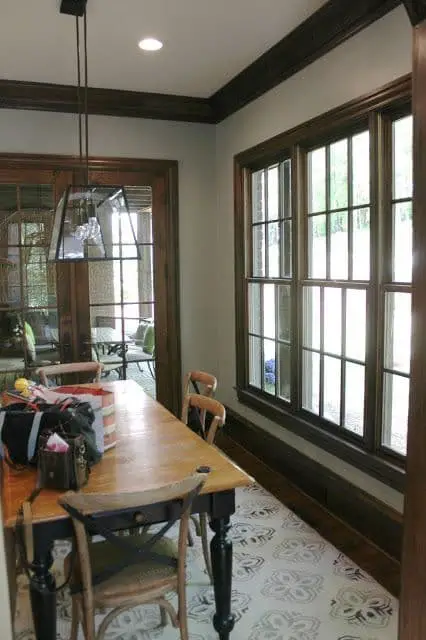
If you’re fortunate enough to have dark wood trim in your home, consider yourself lucky. Not only can it add a touch of sophistication to the space, but it also provides a beautiful contrast to lighter-colored furniture. In fact, when paired with white or light-colored pieces, the dark trim can be the perfect anchor to tie the room together. So, if you’re thinking about painting your walls gray, go for it!
The combination will create a cohesive and visually appealing atmosphere that’s sure to make your space feel warm and inviting.
Green.
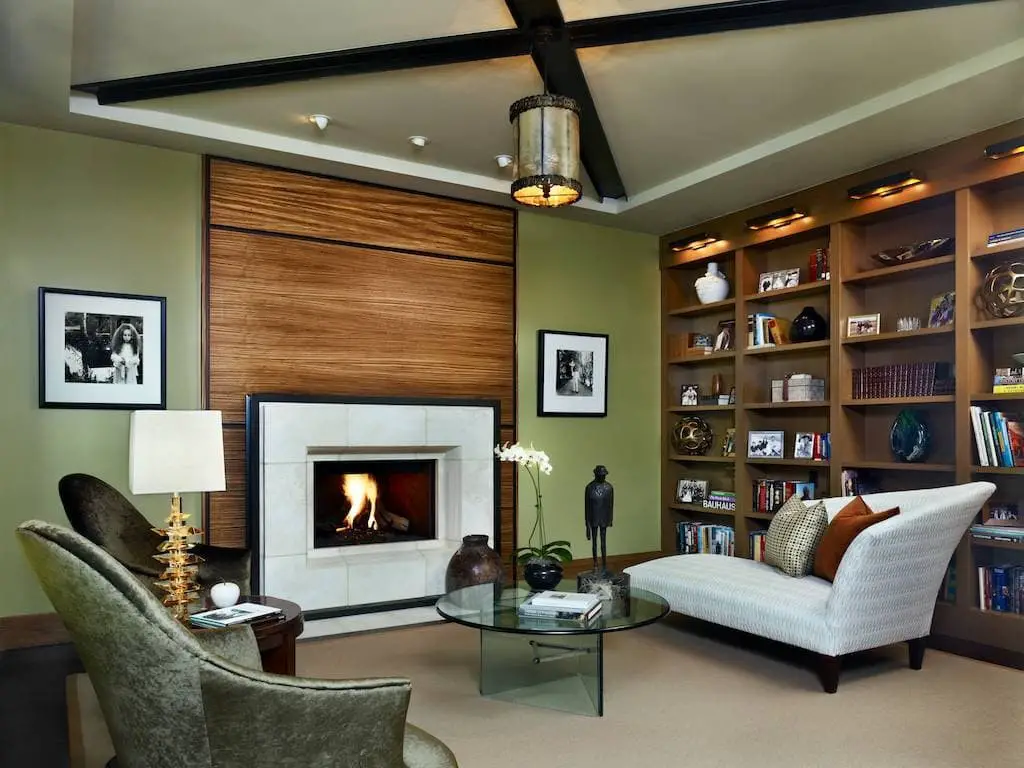
Green walls offer a unique way to introduce a pop of color and vitality into a room without going overboard. They harmonize particularly well with dark wood accents, creating a sense of balance and cohesion. Additionally, green is renowned for its calming effects, making it an ideal choice for bedrooms or home offices seeking relaxation. If you’re looking to incorporate green into your space, consider using a green wall as the focal point.
When it comes to green walls, there are two primary options: artificial green walls made from synthetic materials and living green walls comprising real plants. Each option has its advantages and disadvantages, emphasizing the importance of carefully considering the pros and cons before making a decision.
Neutral White.
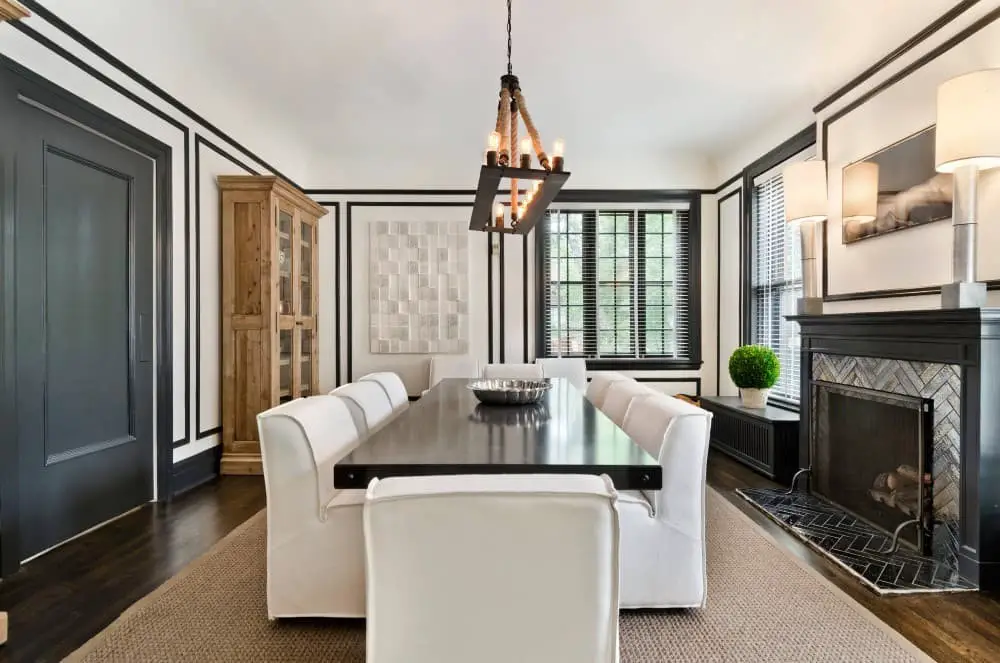
Transforming your home into a luxurious oasis starts with the subtle yet impactful addition of dark wood trim around windows and doors. Pair this elegant touch with crisp white walls or a light neutral hue, creating a harmonious aesthetic that’s particularly stunning in homes boasting high ceilings and an abundance of natural light. As an added bonus, the dark wood trim injects contrast into the space, generating a cozy ambiance that invites relaxation.
Ochres.

The earthy tone that’s making a comeback in home decor is a true delight. Ochre’s warm and calming hue can range from a soft yellow to a rich red-brown, evoking feelings of serenity and coziness. This versatile color pairs beautifully with dark wood trim and furniture, creating a inviting atmosphere in any room.
If you’re considering incorporating ochre into your home design, here are some tips to get you started: Use varying shades of ochre to add depth and interest – a light yellow ochre against a dark brown one creates stunning contrast. Don’t be hesitant to use bold color; ochre looks great with both light and dark hues. Try using it as an accent color to bring warmth to a room, or as the main color scheme to create a cozy ambiance.
For instance, a dark brown ochre can transform a bedroom into a rustic retreat.
Purple.

Purple walls have an undeniable air of sophistication. The deep, rich hue evokes feelings of opulence and refinement, making it a staple in high-end homes. It’s not just the color itself that exudes luxury, but also its perceived exclusivity – after all, how many people can say they’ve painted their walls purple? If you’re looking to inject a touch of elegance into your living space, consider giving one or more walls a rich, regal makeover.
Red.
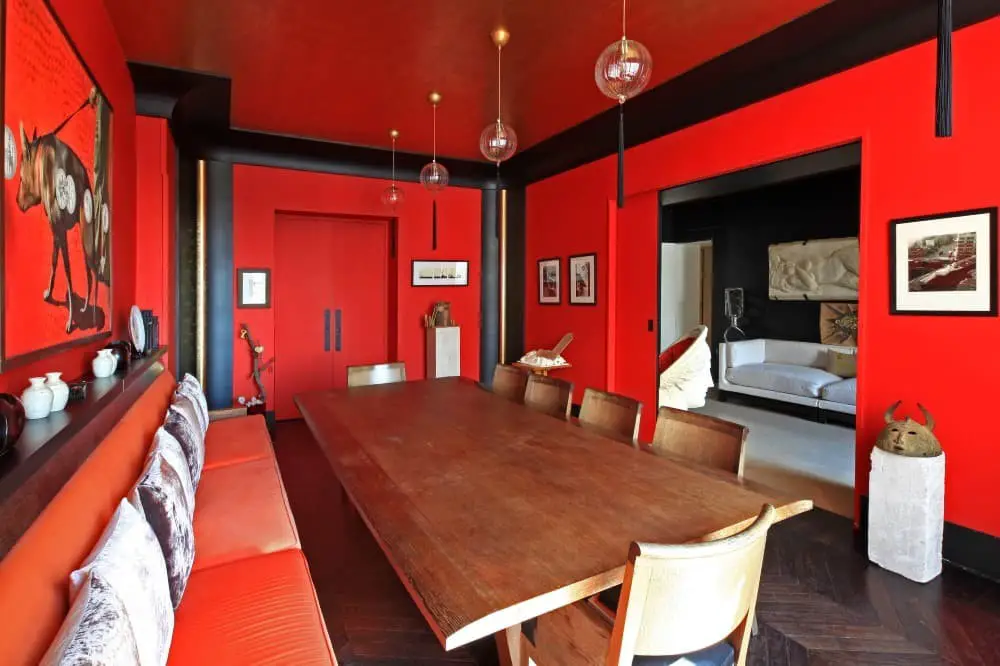
When it comes to creating a unique and visually appealing space, the combination of red walls and dark wood trim is a match made in heaven. The stark contrast between the bold, fiery hue of the walls and the rich, earthy tones of the trim creates a sense of depth and visual interest that’s hard to ignore. And because this color combination works so well with natural light, you can bet your space will feel bright and airy even on cloudy days.
So why not add some personality to your home by painting those walls red and pairing them with dark wood trim? We think you’ll be thrilled with the result!
White.
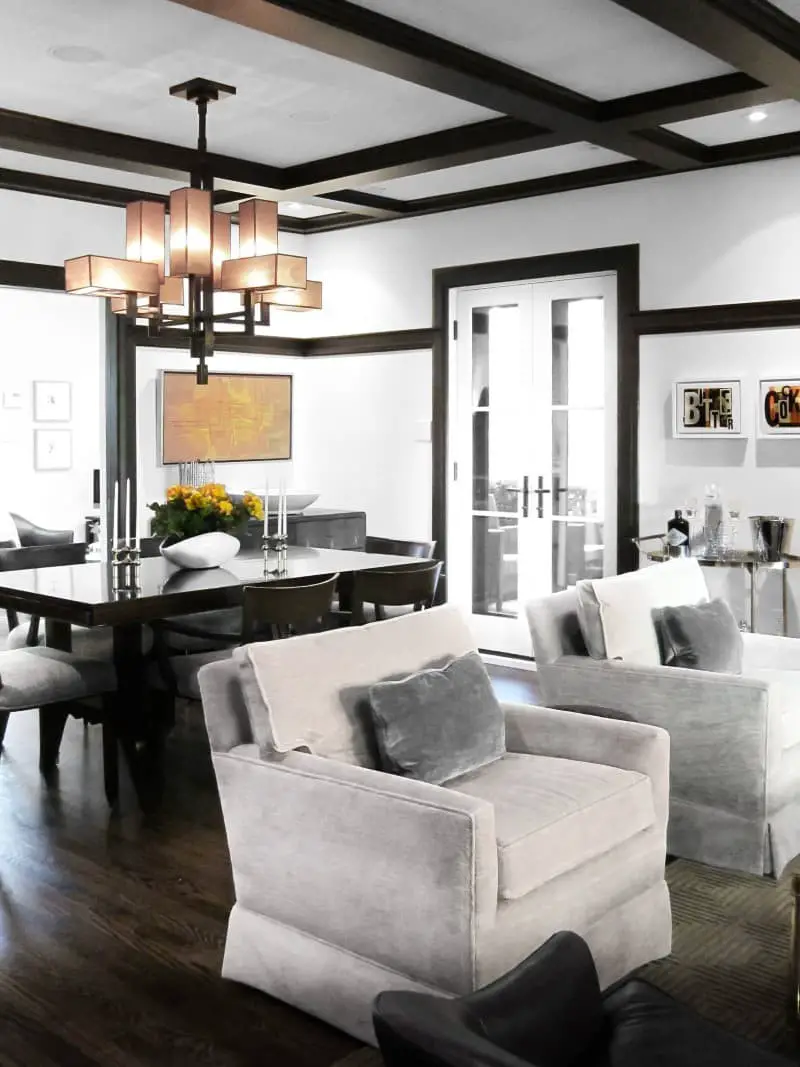
Timeless and versatile, the combination of white walls with dark wood trim is a winning formula that never goes out of style. The crisp white backdrop creates a sense of brightness and airiness, while the rich dark wood adds depth and sophistication to the space. This classic pairing is equally effective across all four seasons, making it an ideal choice for homeowners seeking a quick yet impactful makeover.
Whether you’re looking to revamp your living room, bedroom, or any other area, embracing this harmonious color scheme will undoubtedly yield satisfying results.
Yellow.
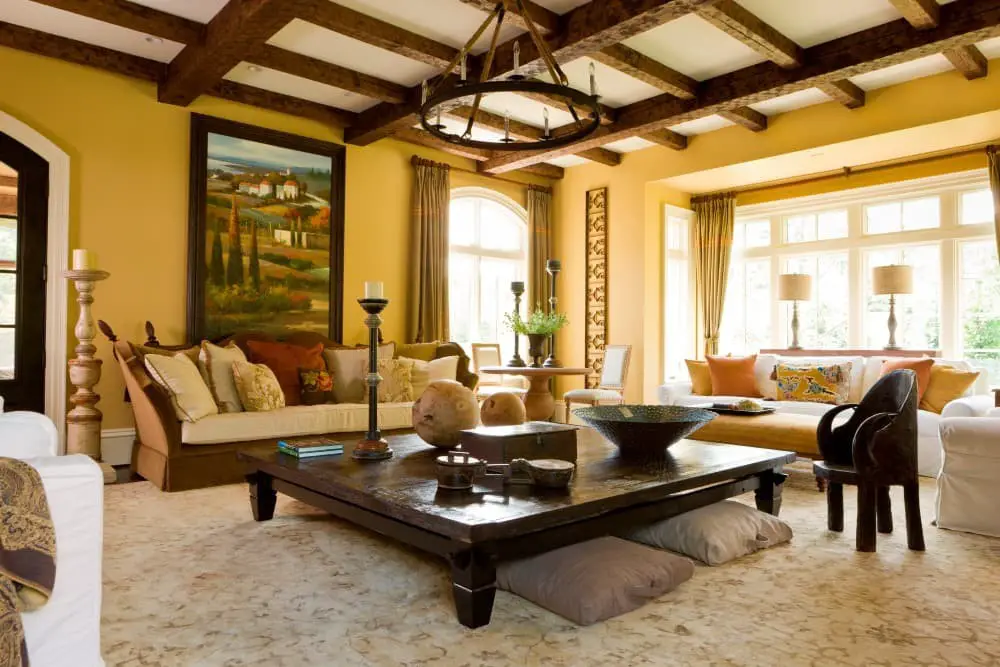
When choosing a hue for your walls, pairing yellow with dark wood trim can result in a harmonious and welcoming atmosphere. The contrasting tones work together to balance out the brightness of the yellow, preventing the space from feeling overwhelming or overly vibrant. For added depth and warmth, consider selecting a yellow shade with undertones of orange, which will create a cozy and inviting ambiance.
Should Trim be lighter or darker than wall color?
The decision regarding the trim’s relationship to the wall color can be subjective and influenced by personal taste. Some individuals opt for a lighter trim, which creates visual contrast and makes the room appear more spacious. Others prefer a darker trim, which blends seamlessly with the walls, creating a sense of continuity. Ultimately, the choice is yours to make.
If you’re struggling to decide, consider experimenting with different shades – either lightening or darkening the trim – to see what resonates with you. It’s essential that any chosen color combination harmonizes and complements each other, avoiding visual clashes. For those seeking additional guidance, consulting a professional can be a valuable resource. They will not only help you find an ideal color scheme but also provide expert advice on maximizing your space’s potential.
The most crucial aspect is ensuring the chosen trim color brings joy to its occupants. After all, it will be a part of your daily environment for an extended period, making it essential that it sparks happiness.
Can I paint my walls the same color as my trim?
While some might argue against dark wood trim due to its potential to shrink a room’s perceived size, there are ways to pull it off successfully. In fact, if you’re set on matching your walls with the trim, a few strategic color choices can create the illusion of a larger space. One approach is to opt for a lighter shade on the trim itself, creating a subtle visual separation between the two.
Alternatively, you could go all out and choose two distinct colors that complement each other – think rich wood tones paired with calming whites or creams. By doing so, you can maintain the cozy charm of dark wood while still achieving a sense of openness in the room.
How to make wood trim look modern
When it comes to updating the aesthetic of your space, one effective way to give old wood trim a modern twist is by introducing contrasting colors. A bold move would be to paint the walls in a hue that starkly contrasts with the dark brown wood trim. Imagine pairing rich brown tones with crisp white or creamy beige walls – the result will be a room that feels revitalized and energized.
If you’re looking for an alternative approach, consider swapping out your traditional wood trim for something lighter in tone. This can work wonders in brightening up the space and imparting a modern feel. For added visual interest, why not opt for crown molding or paneling instead? The intricate details of these design elements can elevate the room’s style quotient while simultaneously updating the look of your wood trim.
Conclusion
When it comes to pairing wall colors with dark wood trim, there’s no one-size-fits-all solution. The key is to consider the undertones of your trim and let that guide your wall color choice. For warm-toned dark wood (think honey or oak), cool-colored walls like blue or green can create a striking contrast and balance out the space. Conversely, if you have cool-toned dark wood (like black or navy), warm-colored walls in beige or yellow can produce a harmonious effect that invites warmth.
If you’re unsure where to start, neutral shades like white, gray, or tan can serve as a safe middle ground, complementing any trim color and adding brightness to the room. Ultimately, the goal is to choose a wall color that resonates with your personal style – don’t be afraid to experiment and find the perfect combination for your home.


